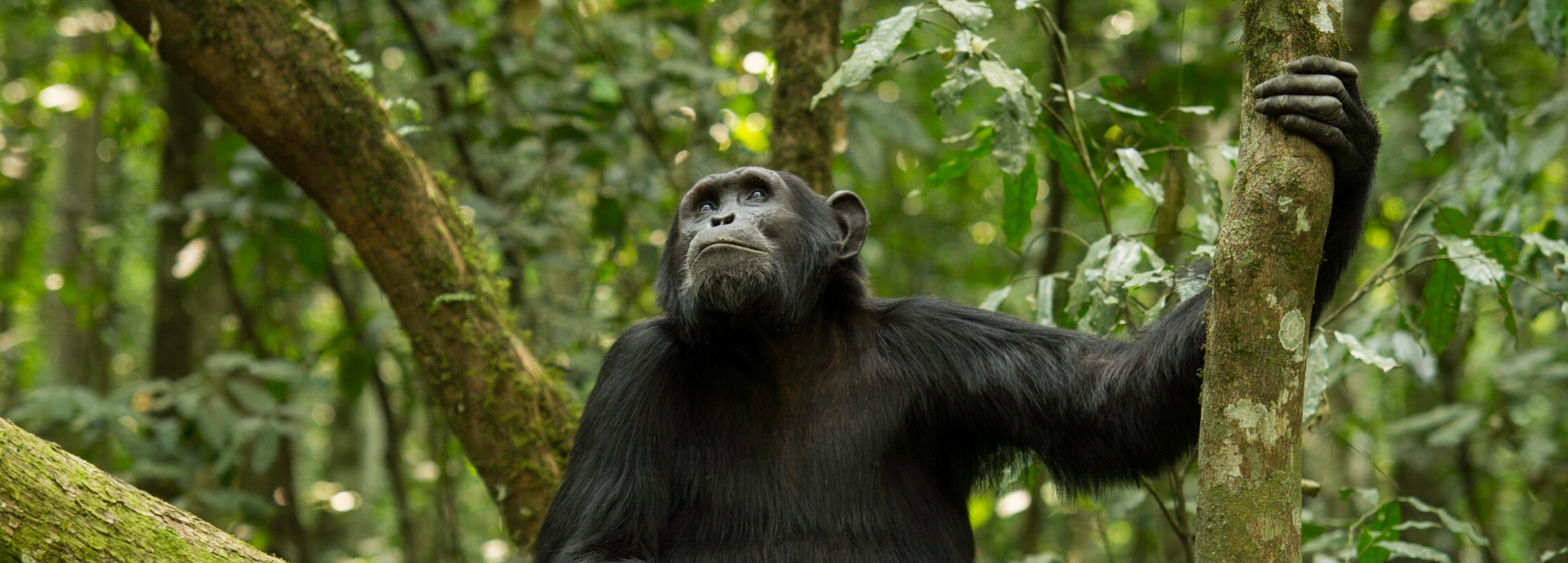A study led by the University of Stirling jointly with the University of Wisconsin-Madison has shed new light on cross-species virus spillovers that can cause pandemics.
A researcher from the Faculty of Natural Sciences at Stirling discovered animals in an African forest eating bat excrement known as guano after a key food source in the region disappeared following selective deforestation.
Lab analysis of the bat guano identified a range of viruses, including a betacoronavirus related to SARS-CoV-2, the virus that caused the Covid-19 pandemic. It remains unknown whether the betacoronavirus found in the guano is transmissible to humans, but it does offer an example of how new infections might jump species barriers.
The study was prompted when Dr Pawel Fedurek observed wild chimpanzees consume bat guano from a tree hollow in Budongo Forest, Uganda.
Dr Fedurek then set up cameras which recorded chimps, monkeys and antelope eating the excrement.

Lecturer, Division of Psychology, Faculty of Natural Sciences
Our work stresses the importance of studying disease ecology before diseases enter humans.
The guano is an alternative source of crucial minerals after the palm trees the mammals once consumed were harvested to extinction locally. The palm was used by people in Budongo to dry tobacco leaves which are then sold to international companies.
Scientists do not yet fully understand the earliest stages of virus spillovers, which can lead to the deaths of tens of thousands of people, but they are thought to involve complex causal chains that begin with humans altering the environment.
Dr Pawel Fedurek, an expert in animal behaviour at the University of Stirling, said: “Our research illustrates how a subtle form of selective deforestation, ultimately driven by a global demand for tobacco, can expose wildlife and, by extension, humans to viruses residing in bat guano, increasing virus spillover risk.
“Studies like ours shed light on the triggers and pathways of both wildlife-to-wildlife and wildlife-to-human virus transmission, ultimately improving our abilities to prevent outbreaks and pandemics in the future.
“Most research into outbreaks and pandemics has focused on curtailing the spread of the virus, by finding an effective vaccine for example, rather than preventing animal-to-human virus transmission from happening in the first place. Our work stresses the importance of studying disease ecology before diseases enter humans.”
Chimpanzees consuming guano in Budongo Forest, Uganda.
After discovering mammals consuming guano, Dr Fedurek and the project co-lead Dr Caroline Asiimwe (then Conservation Coordinator of the Budongo Conservation Field Station, Uganda) involved Professor Tony Goldberg (University of Wisconsin-Madison, USA), who is a world-renowned expert in epidemiology and evolution of infectious diseases.
Professor Goldberg identified the viruses in the guano in collaboration with researchers who quantified the mineral content of the guano (Professor Jessica Rothman, Hunter College of the City University of New York, USA) and established the probability of the novel betacoronavirus to infect the three mammalian species and humans (Gregory K. Rice, Naval Medical Research Command, USA).
Due to the magnitude and complexity of the laboratory analyses involved, the entire project took around six years to complete.
Textbook example
Professor Goldberg said: “Our study links tobacco farming to exposure of at least three species of African wildlife to viruses of bats. We believe this is a textbook example of how new infections might jump species barriers even before they get into humans.
“This is important since the initial stages of the onset of outbreaks, epidemics and pandemics have been particularly elusive for science.
“We may have stumbled upon a series of events that is usually hidden from the view of epidemiologists and public health officials. Our study might be particularly relevant to the origins of bat-borne disease such as coronaviruses and, perhaps, Ebola.”
It is hoped the discovery may make it possible to enact interventions that break these sorts of causal chains, ultimately helping prevent future pandemics.
Health consequences
Dr Asiimwe said: “Our study demonstrates that human activities that alter the environment can lead to devastating health consequences to both wildlife and humans and thus we should urgently learn to use natural resources sustainably.
“Considerable research efforts are also needed to investigate how forest degradation, and other forms of human activity, can affect wildlife’s behaviour in a way that exposes them and humans to dangerous viruses.”
The paper Selective deforestation and exposure of African wildlife to bat-borne viruses was published in the journal Communications Biology.
The research was funded by the European Research Council, the Royal Zoological Society of Scotland, ARCUS foundation, the Armed Forces Health Surveillance Division (AFHSD), Global Emerging Infections Surveillance (GEIS) Branch, ProMIS ID P0167_22_NM, Navy WUN A1417, and the University of Wisconsin-Madison John D. MacArthur Research Chair.

